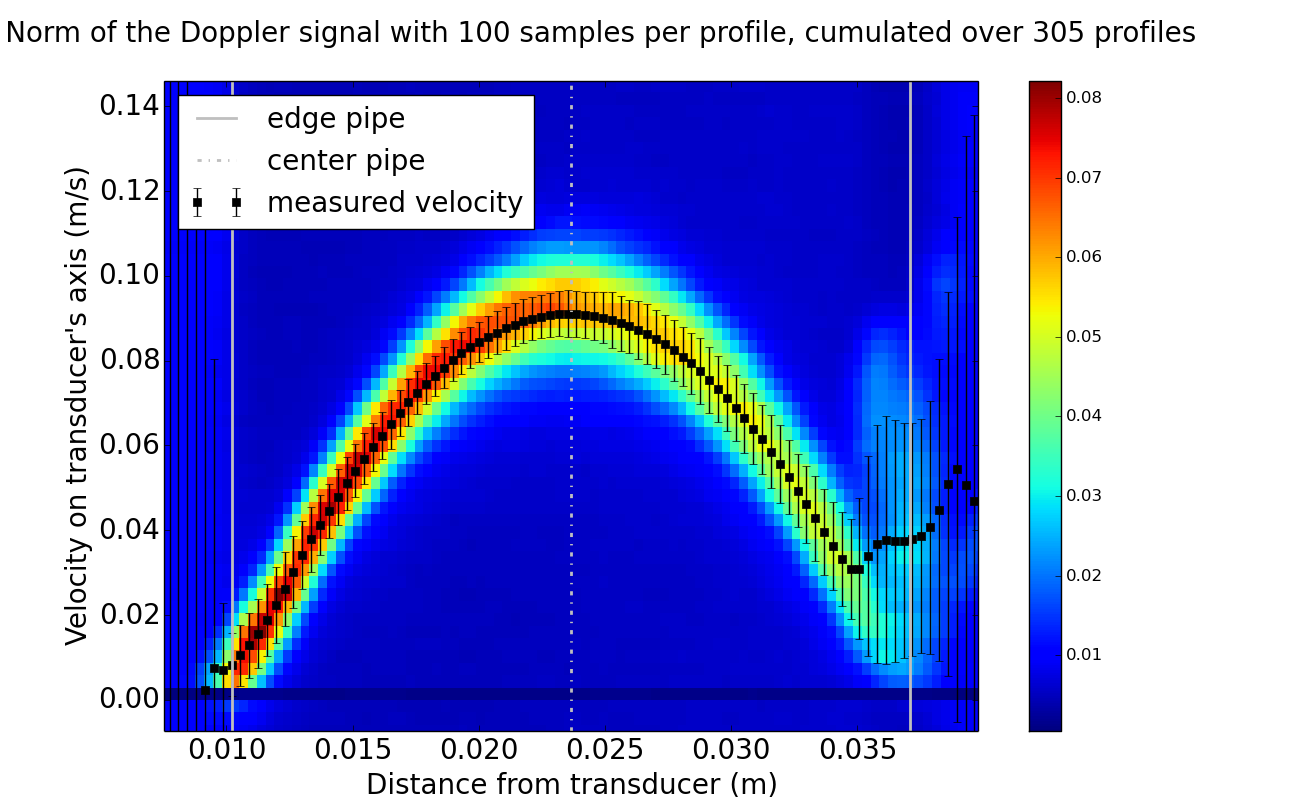Raw Doppler samples recording
The frequency shift from the Doppler effect is quite low compared to the emission frequency \(f_0\). It is too small to be measured accurately from the frequency analysis of the received signal, and particularly when using short pulses, ie. high spatial resolution. Thus the alternative solution is to demodulate the signal with \(f_0\) to extract the Doppler signal. The demodulated complex signal is given by its real part \(I\), from the in-phase demodulation, and by its imaginary part \(Q\), from the quadrature demodulation (Fischer 2004, Jones 1993).
Different methods were developed to estimate the Doppler frequency \(f_D\), which are based on the analysis of a sequence of \(N\) pulses emitted with a frequency \(PRF\) (Pulse Repetition Frequency). Thus, for a given cell, the samples \(I_n\) and \(Q_n\) of each \(n\) pulse are measured simultaneously with a periodicity \(1 \over {PRF}\).
The velocity values recorded by Ubertone’s devices use this Doppler Signal to estimate \(f_D\). The UB-Lab X2 and X8 are able to store these \(IQ\) Doppler samples during the recording. This offers the possibility of custom signal processing, such as Doppler spectrum (FFT method - Fast Fourier Transform), wavelet analysis, adaptive filtering, etc. This allows to optimise the estimation of the velocity in some specific cases.
Examples of applications can be found here:
- A study focused on the examination of velocity and echo intensity near the air-water interface in an open channel flow (Schmitt 2012)
- Dr Dufour’s work on an artificial stomach in his thesis
- and his work on food processing (oil, chocolate)
In the UB-Lab X2 and X8, the Raw Doppler recording is limited to about 30 000 pairs of \(IQ\) data within a block of continuous sampling (see user manual for details), while the number of blocks is not limited.
References:
Fischer, S.: Développement d’une instrumentation ultrasonore pour la mesure des vitesses des liquides au-delà de la limite de Nyquist par une approche spectrale. phdthesis, Université Louis Pasteur, December 2004.
Jones, S. A.: Fundamental sources of error and spectral broadening in doppler ultrasound signal. Critical Reviews in Biomedical Engineering, 21:399-483, 1993.
Schmitt, P., Pallarès, A., Tasaka, Y., Sakurai, K., Fischer, S.; Ultrasonic wave interaction with air-water boundary layer, ISUD 8, Dresden, September 2012.
